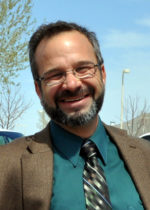The Juvenile Products Manufacturers Association (JPMA), a nonprofit association that represents the manufacturers of 95 percent of the prenatal and preschool products sold in North America, announced the appointment of Joseph Colella as its new director of child passenger safety. The assignment was effective June 1.
“Joe has been a friend of JPMA and the juvenile products industry for many years. Many of our members are car seat manufacturers, and they, along with JPMA, are thrilled to be able to formalize our relationship with him,” said JPMA Executive Director Kelly Mariotti.
Read More from “JPMA Announces New CPS Director”

 As you know, there have been communications and on-going technical reviews regarding the validity of the 2007 study comparing the injury risk between rear- and forward-facing car seats for children less than 2 years of age in the United States (
As you know, there have been communications and on-going technical reviews regarding the validity of the 2007 study comparing the injury risk between rear- and forward-facing car seats for children less than 2 years of age in the United States (


